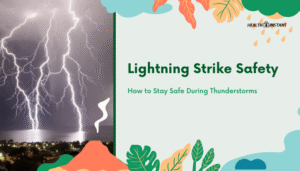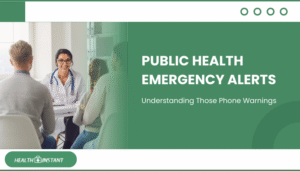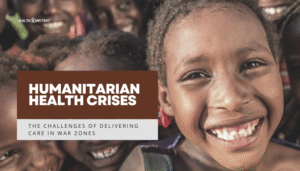Medical Emergency Apps: Using Tech to Get Help Fast When Every Second Counts
Introduction An urgent medical crisis can occur at any time—whether you are out for a jog, visiting a relative, or resting at home. In a dire moment, even a few seconds may influence survival. Modern smartphones and digital tools now...
Read MoreWhen to Call an Ambulance: Knowing When You Need EMTs vs Driving Yourself
Introduction Emergencies can happen without warning. In such moments, deciding whether to call an ambulance or drive yourself (or a loved one) to the hospital can feel overwhelming. Calling an ambulance means rapid help from Emergency Medical Technicians (EMTs) who...
Read MoreLightning Strike Safety: How to Stay Safe During Thunderstorms
Introduction Thunderstorms can be mesmerizing, but they’re also dangerous when accompanied by lightning. A single bolt can carry millions of volts, presenting significant risk to anyone caught in its path. This guide details how lightning works, why it’s so hazardous,...
Read MoreTick Bites and Lyme Disease: Safe Removal and When to See a Doctor
Introduction Outdoor adventures in wooded or grassy areas can come with a hidden threat: ticks. These small, blood-sucking arachnids occasionally carry illnesses like Lyme disease, which can have serious long-term impacts if untreated. Prompt, correct removal of attached ticks lowers...
Read MoreSnakebite First Aid: Dos and Don’ts if Bitten by a Venomous Snake
Introduction Encountering a snake in the wild can be nerve-racking, especially if it leads to a bite. While most snakes are non-venomous, certain species produce venom that can cause serious injuries or complications. Knowing the fundamentals of first aid for...
Read MorePersonal Locator Beacons: Rescue Tech for Hikers and Adventurers in Trouble
Introduction Outdoor enthusiasts—from backcountry skiers to solo hikers—may wander far beyond cellphone coverage. If accidents or sudden medical crises happen in these remote areas, conventional methods to call for help become unfeasible. Personal locator beacons (PLBs) bridge that gap, allowing...
Read MorePublic Health Emergency Alerts: Understanding Those Phone Warnings
Introduction In a world increasingly prone to sudden crises—be it natural disasters, disease outbreaks, or other threats—public health emergency alerts have become essential. Often delivered via texts, push notifications, or specialized broadcast systems, these alerts help citizens stay informed and...
Read MoreOutbreak Containment: What Does It Mean to ‘Flatten the Curve’?
Introduction During outbreaks—such as a pandemic influenza or emerging virus—public health experts often emphasize the concept of “flattening the curve.” At its core, this approach aims to slow the infection rate so that daily case numbers stay below a threshold...
Read MoreAsteroid Impact or Solar Flare: Extremely Rare Disasters and Potential Health Fallout
Introduction While disasters like earthquakes, hurricanes, or outbreaks occur more often, public concern occasionally turns to extreme events like an asteroid impact or a massive solar flare. Although these scenarios are incredibly rare, understanding their potential health consequences helps guide...
Read MoreHumanitarian Health Crises: The Challenges of Delivering Care in War Zones
Introduction In regions torn by conflict, providing healthcare transcends normal medical challenges. Facilities may be damaged, supply lines broken, and staff threatened—yet urgent care remains paramount. Organizations like Médecins Sans Frontières (MSF), the International Committee of the Red Cross (ICRC),...
Read More








